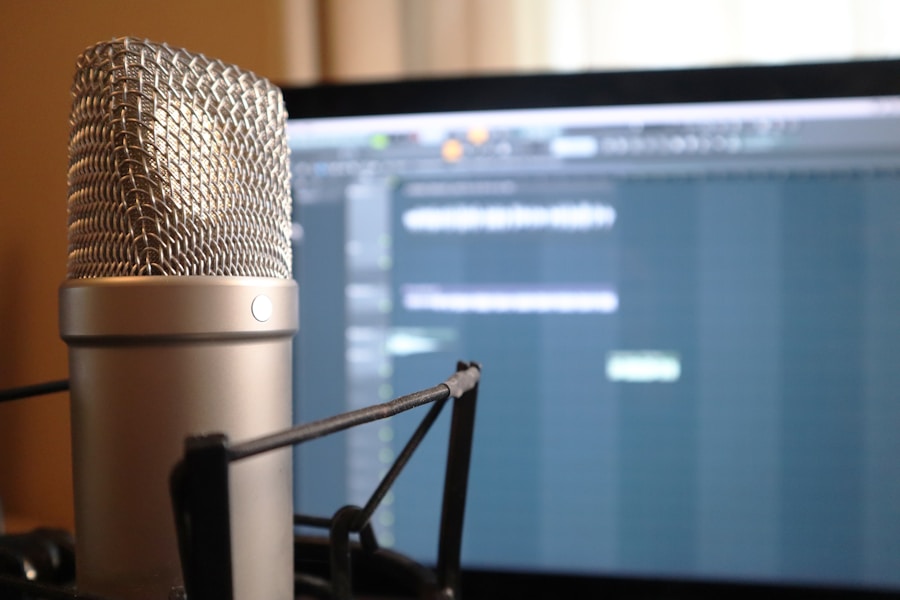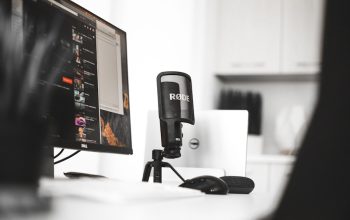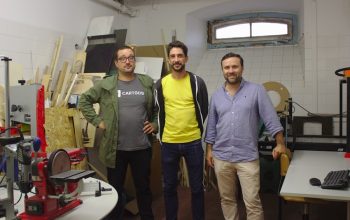In the rapidly evolving landscape of digital media, podcasting has emerged as a powerful medium for storytelling, education, and entertainment. As the popularity of podcasts continues to soar, the demand for high-quality audio production has become increasingly critical. This is where podcast editing software plays a pivotal role.
These tools not only facilitate the editing process but also enhance the overall listening experience by allowing creators to refine their audio content meticulously. From removing background noise to adding music and sound effects, podcast editing software provides a suite of features that can elevate a simple recording into a polished production. The significance of podcast editing software extends beyond mere technical capabilities; it embodies the creative vision of the podcaster.
A well-edited podcast can captivate an audience, maintain engagement, and convey professionalism. As such, selecting the right software is essential for both novice and experienced podcasters alike. With a plethora of options available, understanding the nuances of each tool can empower creators to make informed decisions that align with their specific needs and goals.
Key Takeaways
- Podcast editing software is essential for creating high-quality audio content.
- When choosing the best podcast editing software, consider factors such as user-friendly interface, advanced editing tools, and pricing options.
- Top podcast editing software options include Audacity, Adobe Audition, GarageBand, Hindenburg Journalist, and Pro Tools.
- Each software offers unique features and benefits, such as multi-track editing, noise reduction, and audio effects.
- Consider the pricing and subscription options, as well as the availability of advanced editing tools and effects, when making a final decision.
Criteria for Choosing the Best Podcast Editing Software
When evaluating podcast editing software, several criteria should be considered to ensure that it meets the unique demands of your project. First and foremost, audio quality is paramount. The software should support high-resolution audio formats and provide tools for enhancing sound clarity.
This includes features like noise reduction, equalization, and compression, which are essential for achieving a professional sound. Additionally, compatibility with various audio file formats is crucial, as podcasters often work with multiple sources and types of recordings. Another critical factor is the user interface and overall ease of use.
For many podcasters, especially those who may not have extensive technical backgrounds, a steep learning curve can be a significant barrier. Intuitive design and straightforward navigation can make the editing process more efficient and enjoyable.
Lastly, budget considerations cannot be overlooked; different software options come with varying price points and subscription models, making it essential to find a solution that offers value without compromising on quality.
Top Podcast Editing Software Options

The market for podcast editing software is diverse, with several standout options catering to different needs and preferences. One of the most popular choices among podcasters is Adobe Audition.
Another noteworthy contender is Audacity, an open-source software that has gained a loyal following due to its accessibility and comprehensive functionality. For those seeking a more streamlined approach, GarageBand provides an intuitive interface ideal for Mac users, while Hindenburg Journalist is tailored specifically for podcasters and radio producers. In addition to these established names, newer entrants like Descript have begun to make waves in the industry by offering innovative features such as text-based editing and automatic transcription.
This allows users to edit audio by simply modifying the text transcript, making it an appealing option for those who prefer a more visual approach to editing. Each of these software options brings unique strengths to the table, catering to a wide range of user preferences and technical requirements.
Features and Benefits of Each Software
| Software | Features | Benefits |
|---|---|---|
| Microsoft Excel | Advanced formulas, data analysis tools, pivot tables | Efficient data manipulation, powerful data visualization, complex calculations |
| Adobe Photoshop | Layer-based editing, advanced image manipulation tools | Professional photo editing, creative design capabilities |
| Google Docs | Real-time collaboration, cloud storage, document sharing | Easy collaboration, access from anywhere, version control |
Adobe Audition stands out for its comprehensive suite of features designed for professional audio production. It includes multitrack editing capabilities, allowing users to work with multiple audio tracks simultaneously. The software also offers advanced noise reduction tools, spectral frequency display for visualizing sound frequencies, and a variety of effects such as reverb and delay.
These features enable podcasters to create rich soundscapes that enhance storytelling and engage listeners on a deeper level. Audacity, on the other hand, is celebrated for its accessibility and cost-effectiveness. As an open-source platform, it is free to use while still providing a robust set of editing tools.
Users can easily cut, copy, and paste audio segments, apply effects like normalization and compression, and utilize plugins to expand functionality further. Its community-driven nature means that users can access a wealth of resources and support from fellow podcasters and developers alike. GarageBand offers a user-friendly interface that simplifies the editing process for Mac users.
It comes pre-installed on many Apple devices, making it readily accessible for those starting their podcasting journey. GarageBand includes built-in loops and sound effects that can be easily integrated into projects, allowing users to experiment with different audio elements without needing extensive technical knowledge. Hindenburg Journalist is specifically designed for podcasters and radio producers, emphasizing storytelling through audio.
Its unique features include automatic leveling, which ensures consistent volume levels throughout the recording, and voice profiling that optimizes sound quality based on the speaker’s voice characteristics. This focus on narrative-driven content makes Hindenburg an excellent choice for those looking to create compelling audio stories. Descript revolutionizes podcast editing by introducing text-based editing capabilities.
Users can edit their audio files by simply modifying the text transcript, making it incredibly intuitive for those who may not be familiar with traditional audio editing techniques. Additionally, Descript offers features like overdubbing, which allows users to replace words in their recordings without needing to re-record entire segments. This innovative approach streamlines the editing process and enhances productivity.
User-Friendly Interface and Ease of Use
A user-friendly interface is crucial in podcast editing software as it directly impacts the efficiency of the editing process. Software like GarageBand excels in this area with its drag-and-drop functionality and visually appealing layout that makes navigation straightforward even for beginners. The intuitive design allows users to focus on creativity rather than getting bogged down by complex technicalities.
Audacity also prioritizes ease of use while offering powerful features. Its layout may appear more utilitarian compared to GarageBand’s polished aesthetic; however, it provides clear access to essential tools without overwhelming users with unnecessary options. The availability of numerous online tutorials further enhances its usability, enabling new users to quickly learn how to navigate the software effectively.
In contrast, Adobe Audition’s interface may present a steeper learning curve due to its extensive feature set tailored for professional use. While it offers unparalleled control over audio editing processes, new users might find themselves needing additional time to familiarize themselves with its capabilities fully. However, once mastered, Audition’s interface allows for highly efficient workflows that can significantly enhance productivity.
Descript’s text-based editing approach introduces an entirely new paradigm in user experience. By allowing users to edit audio through text manipulation, it eliminates many traditional barriers associated with audio editing software. This innovative method appeals particularly to those who may feel intimidated by conventional audio interfaces or who prefer working with written content.
Pricing and Subscription Options

Pricing structures for podcast editing software vary widely based on features offered and target audiences. Adobe Audition operates on a subscription model through Adobe Creative Cloud, which provides access to its full suite of applications but may be considered pricey for individual podcasters or hobbyists. However, its extensive capabilities justify the investment for professionals seeking high-quality production tools.
Audacity stands out as a free option that does not compromise on functionality. Being open-source means that users can access all features without any financial commitment while benefiting from community support and ongoing updates. This makes Audacity an attractive choice for those just starting or working within tight budgets.
GarageBand is another free option available exclusively for Mac users. Its inclusion with Apple devices makes it easily accessible while providing sufficient features for basic podcast production needs. However, users looking for more advanced capabilities may eventually need to transition to more robust software as their projects grow in complexity.
Hindenburg Journalist offers tiered pricing based on user needs, including options for individual podcasters as well as teams or organizations requiring collaborative features. This flexibility allows users to select a plan that aligns with their specific requirements while ensuring they have access to essential tools. Descript employs a subscription model with various pricing tiers based on usage levels and feature access.
While it offers a free trial period allowing users to explore its capabilities without commitment, ongoing costs may accumulate depending on how extensively one utilizes its advanced features like overdubbing or transcription services.
Advanced Editing Tools and Effects
Advanced editing tools are essential for podcasters aiming to produce high-quality audio content that stands out in a crowded marketplace. Adobe Audition excels in this regard with its extensive array of effects and processing options. Features such as spectral analysis allow users to visualize sound frequencies in real-time, enabling precise adjustments that enhance clarity and reduce unwanted noise.
Audacity also provides a range of advanced tools despite being free software. Users can apply various effects such as pitch shifting or time stretching while utilizing plugins like VSTs (Virtual Studio Technology) to expand their creative possibilities further. This flexibility allows podcasters to experiment with different sounds and styles without incurring additional costs.
GarageBand includes several built-in effects tailored specifically for music production but can also be effectively utilized in podcasting contexts. Users can apply reverb or echo effects to create depth in their recordings or utilize equalization tools to balance sound frequencies effectively. Hindenburg Journalist focuses on narrative-driven content creation by offering unique features like automatic leveling and voice profiling that optimize sound quality based on individual speakers’ characteristics.
These advanced tools streamline the editing process while ensuring consistent audio quality throughout episodes. Descript’s innovative approach includes features like automatic transcription that not only aids in editing but also enhances accessibility for listeners who prefer reading along with audio content. Its overdubbing feature allows users to seamlessly replace words or phrases without needing extensive re-recording sessions—an invaluable tool for maintaining flow during edits.
Conclusion and Final Recommendations
Selecting the right podcast editing software is crucial for achieving high-quality audio production that resonates with audiences. Each software option presents unique strengths tailored to different user needs—from professional-grade tools like Adobe Audition to accessible platforms like Audacity and GarageBand. As you navigate your choices, consider factors such as ease of use, pricing structures, advanced features, and your specific podcasting goals.
Ultimately, investing time in exploring these options will empower you to find the perfect fit for your podcasting journey—one that enhances your creative expression while ensuring your content stands out in an increasingly competitive landscape.
If you are looking for more information on podcast editing software, you may want to check out this article on the Education Podcast Network blog titled “Hello World”. This article discusses the importance of using the right tools to edit your podcast episodes and offers tips on how to make your audio sound professional. It could be a valuable resource for anyone looking to improve their podcast editing skills.
FAQs
What is podcast editing software?
Podcast editing software is a type of digital audio editing software specifically designed for editing and producing podcasts. It allows users to edit, mix, and enhance audio recordings to create high-quality podcast episodes.
What are some popular podcast editing software options?
Some popular podcast editing software options include Adobe Audition, Audacity, GarageBand, Hindenburg Journalist, and Pro Tools. Each of these software options offers a range of features for editing and producing podcasts.
What features should I look for in podcast editing software?
When choosing podcast editing software, it’s important to look for features such as multi-track editing, noise reduction, audio effects, file format compatibility, and ease of use. Additionally, some software options offer specific podcasting features like chapter markers and ID3 tag support.
Is podcast editing software free or paid?
Podcast editing software can be both free and paid. There are several free options available, such as Audacity and GarageBand, which offer basic editing features. Paid software options like Adobe Audition and Pro Tools provide more advanced features and technical support, but come with a price tag.
Can podcast editing software be used by beginners?
Yes, many podcast editing software options are designed to be user-friendly and accessible to beginners. They often include tutorials, templates, and intuitive interfaces to help new users get started with editing and producing podcasts.



